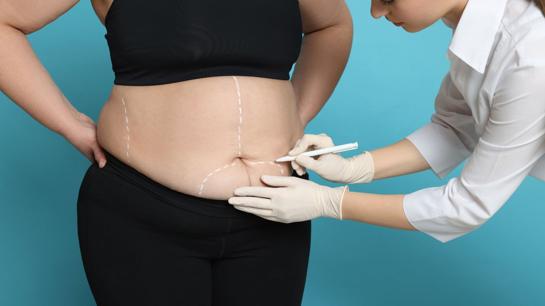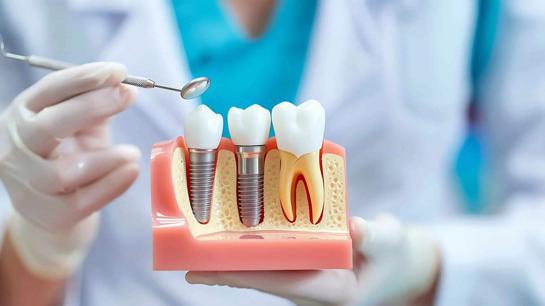BBL Surgery Abroad Guide
This guide explores BBL surgery overseas—who seeks it, procedure details, risks, recovery, costs, and clinic selection. Learn the pros and cons of Brazilian Butt Lift abroad for safe, confidence-boosting results.
There’s a myth that people travel for cosmetic surgery just to save a buck or hop on a trend. In reality, it’s usually a much more tangled—sometimes emotional—decision. Brazilian Butt Lift (BBL) surgery abroad sits at the intersection of hope, caution, practical worries, and that quiet, persistent “what if” many of us feel about our bodies.
Let’s look deeper—not just at what the brochures say, but at the messy real stuff: who considers a BBL abroad, how it’s done, what’s risky, how to make safe choices, and what to expect along the way. Throughout, you’ll see gentle reminders, reflective notes, and a rhythm designed to feel truly lived-in.
What Is a Brazilian Butt Lift (BBL)?
A BBL shapes the body by taking fat from areas you’d be glad to lose (abdomen, back, thighs), cleaning it, and moving it into the buttocks and hips. There are no artificial implants—just your own tissue, reshaped for new curves and proportions.
Unlike older implants, a BBL aims for a natural, smooth look. Some clinics abroad offer “mini” versions (less volume), or combine a BBL with other body sculpting moves.
Who Chooses BBL Surgery Abroad?
Forget stereotypes. It’s not just twenty-somethings chasing trends. Most patients:
- Want curves that feel “theirs,” not bought
- Are frustrated by stubborn areas despite diet/exercise
- Feel out of proportion, maybe after weight loss, pregnancies, or natural shifts over time
- Hope for long-lasting change—not just in jeans size, but how they show up in the world
Candidates are typically in good health, have enough fat to donate, are non-smokers (or quit in advance), and want something real—not an “Instagram body,” but a sense of balance and renewed confidence.
Hidden Risks and Real Dangers
BBL surgery has well-documented, serious risks. Some are more common with overseas “surgery mills” or clinics with low-cost, high-volume assembly-line practices.
- Fat embolism (fat entering the bloodstream and traveling to lungs/heart/brain): This is the most serious and can be fatal. Historically, death rates were about 1 in 3,000; recently, with better techniques and standards, they may be closer to 1 in 15,000—but this still makes BBL one of the riskiest major cosmetic surgeries.
- Profound infection: Sometimes leading to abscesses or “superbugs,” especially when hygiene is compromised.
- Severe asymmetry or contour lumps from poor technique or fat dying inside the tissue.
- Blood clots (deep vein thrombosis or pulmonary embolism), poorly-healing wounds, or nerve damage.
Most deaths and major complications occur in underregulated clinics or with unlicensed surgeons. The safest results come from choosing board-certified, high-volume surgeons in accredited facilities, where fat is injected over—not into—the muscle, and real-time ultrasound guidance is used.
Preparing for BBL Surgery Abroad
- Full medical checkup: Honest disclosure of all illnesses, medication, and habits (yes, even the embarrassing or “minor” ones).
- Stop smoking/alcohol: Usually required 4+ weeks before and after, to aid healing and lower risks.
- Change or pause meds: Many over-the-counter and herbal products must be avoided (e.g., aspirin, ginseng).
- Detailed consultations: Sometimes by video before you even leave home—expect deep dives into your expectations, risks, and aftercare logistics.
- Plan for support: Recovery is tough—someone should help you those first days.
Emotionally, expect wobbles. Most are unprepared for how vulnerable they’ll feel: jetlagged, bandaged, swollen, and maybe questioning the whole thing as they heal, far from home.
How BBL Surgery Is Actually Done
- General anesthesia: You’ll sleep through it.
- Liposuction: Tiny incisions harvest fat from your chosen “problem areas.”
- Fat processing: Cleaned and prepared, the fat is injected into your buttocks and hips—multiple sites, careful layering, and (in the best clinics) only above the muscle, using ultrasound guidance.
- Incision closure & compression: Small wounds are closed or left open to drain; you’ll wake up in a snug surgical garment.
- Operation length: 2–4 hours. Some combine with other procedures, but doing so ups the risks and slows recovery.
Recovery: The Unvarnished Version
First days:
- Soreness, bruising, drainage from lipo points
- Tricky for anyone used to self-sufficiency—no direct sitting or lying on your back for about 2–3 weeks. Specialized pillows and lots of gentle standing/walking.
Two weeks on:
- Most swelling and aches fade, but results keep shifting for up to 6 months
- Movement gets easier, but strenuous activity is off-limits for weeks
Monitoring:
- Many clinics offer digital check-ins for travelers. If fevers or sudden pain start, seek care (can be tricky away from home).
Long-term:
- About 60–80% of the transferred fat “takes” permanently, but some is absorbed by the body.
- Scars are typically tiny and fade, but real results aren’t visible until at least six months.
What Results Should You Expect?
- Firmer, fuller, lifted shape—most say their confidence and comfort in clothing grows
- Waist, thighs, or abdomen look slimmer thanks to liposuction
- Symmetry and proportion improve, but small lumps or shape mismatches do sometimes happen
- Satisfaction highest when expectations are realistic and technique is cautious, not overly aggressive
BBL Surgery Alternatives
- Buttock implants: Used less often due to shifting, pain, or unnatural feel
- Collagen or stimulant injections: Mild, temporary improvements; typically expensive, limited effect
- Specialized exercise/non-surgical treatments: Can tone but won’t create major volume if nature hasn’t stocked you with gluteal fat reserves
Non-surgical measures can help the mildly dissatisfied, but transformative change for flat or sagging areas still requires surgery.
Why Do People Choose BBL Surgery Abroad?
- Lower cost, sometimes same or better results (in top clinics)
- Shorter wait times—no months-long queues, surgery fits your schedule
- Specialist, boutique care: personalized guidance and logistics help
- Privacy: recovery far from prying eyes and neighborhood gossip
- Access to newer techniques: some advances not yet at home
With every successful, seamless trip, there are cautionary tales—diligence and skepticism go a long way.
Frequently Asked Questions (FAQ)
- Is it painful?
- It’s uncomfortable—mostly swelling and movement restrictions, not sharp pain. Most use prescription meds a few days, then switch to lighter relief.
- How long will I stay in the hospital?
- Usually a few hours to one night, unless more monitoring is needed for complex procedures.
- When can I travel?
- Light travel with breaks and careful movement is often possible after 7–10 days. Many stay longer for initial checkups.
- Are the results permanent?
- Most transferred fat is “permanent,” but weight changes, pregnancy, or aging will alter your look. Some loss (20–40%) in the first 6 months is normal.
- Is BBL surgery abroad actually safe?
- At top clinics, risk is similar to home-country surgery. Cut-rate centers and bulk procedures abroad drive most major complications. Board-certified surgeons and visual guidance lower risk.
Closing Reflections
There’s no shortcut to confidence, nor a “riskless” path to change. Honest research, careful selection, and clarity on your why are everything. The real reward? Feeling at ease, not just in jeans, but in your own skin—no matter what the passport says.























